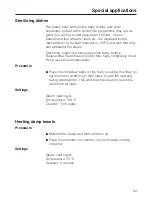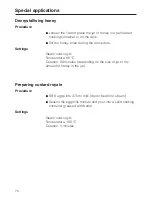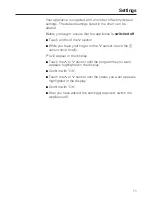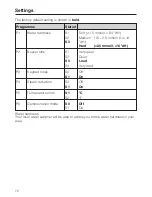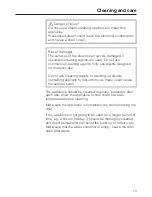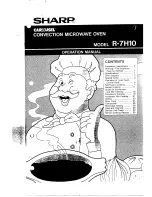
Bottling
Only use unblemished, fresh produce which is in good
condition.
Glass jars
Use clean glass jars and accessories and check them for any
defects. Glass jars with twist off lids or glass lids with a
rubber seal are suitable.
Make sure that all the glass jars are the same size so that
bottling is carried out evenly.
After you have filled the jars with the bottled produce, clean
the glass rims with a clean cloth and hot water and then seal
the jars.
Fruit
Remove blemished fruit, wash and dry the produce briefly but
thoroughly. Be careful when washing berries as they are
easily squashed.
Remove any peel, stalks, cores or stones.
Cut up large fruit. For example, cut apples into slices.
If you are bottling fruit with stones (e.g. plums, apricots)
without removing the stones, pierce the fruit several times
with a fork or wooden skewer as otherwise it will burst.
Vegetables
Rinse, clean and cut up vegetables.
Vegetables should be blanched before bottling to help them
retain their colour (see "Blanching").
Fill volume
Fill the glass jars with produce up to a maximum of 3 cm
below the rim. Do not pack it down as this will damage the
cell walls of the produce. Tap the jar gently onto a cloth to
help distribute the contents evenly.
Fill the jars with liquid. The produce must be completely
covered.
Use a sugar solution for fruit and a salt or vinegar solution for
vegetables.
Special applications
58
Содержание DG 6100
Страница 97: ...97 ...
Страница 98: ...98 ...
Страница 99: ...99 ...
Страница 100: ...M Nr 09 651 660 05 en AU NZ DG 6100 DG 6200 ...


























